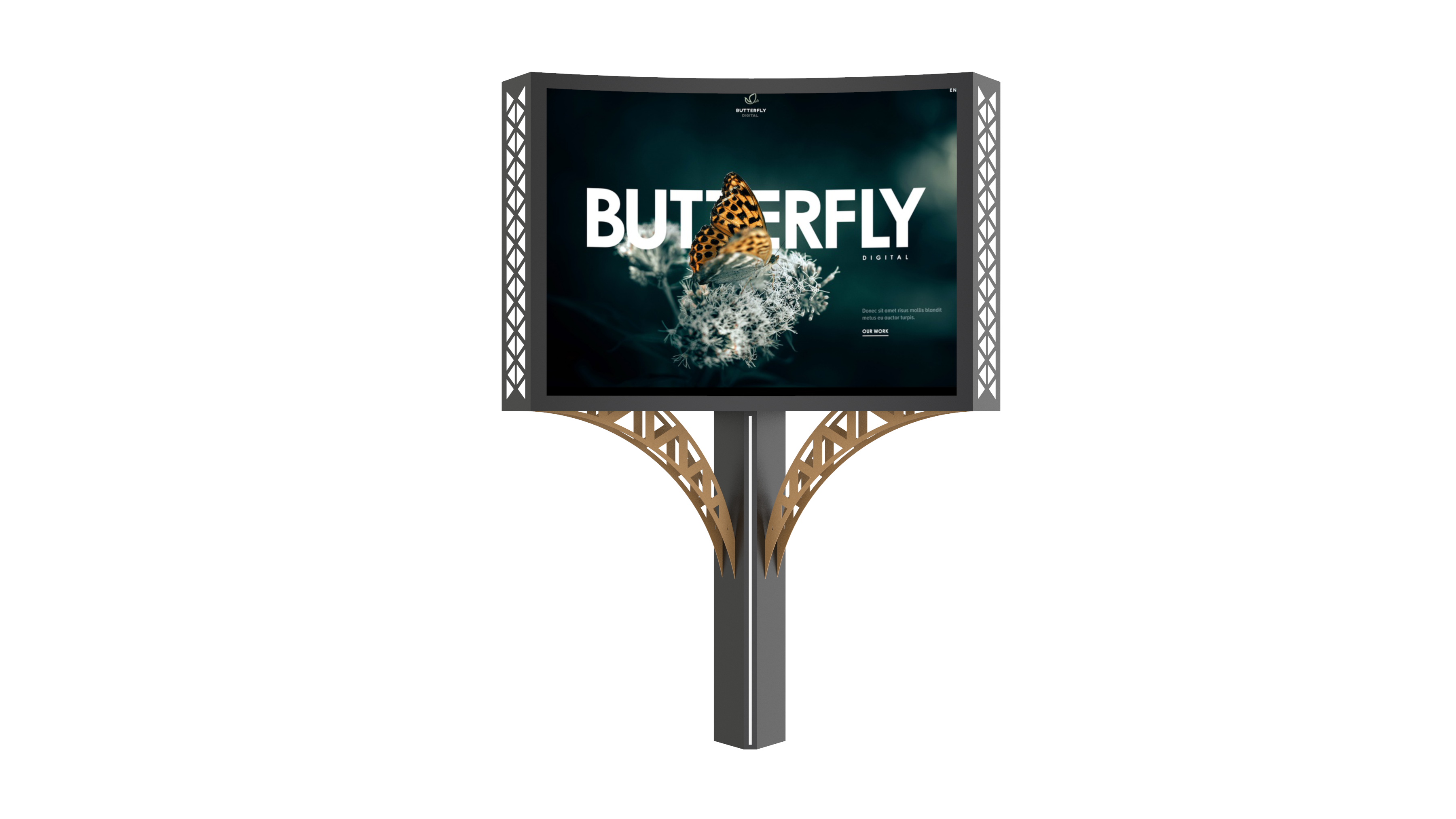Outdoor LED billboards have become a popular and effective medium for advertising, due to their high visibility, durability, and ability to deliver dynamic content. This document outlines the key technical specifications that must be considered when selecting or designing outdoor LED billboards for advertising.
1. Display Technology
The core component of an outdoor LED billboard is its LED (Light Emitting Diode) modules. These modules use a grid of LEDs to display images and videos. LEDs offer bright, vibrant displays even in direct sunlight, which makes them ideal for outdoor advertising.
LED Type: The most common LEDs used are SMD (Surface Mounted Device) or DIP (Dual In-line Package) LEDs. SMD LEDs are typically used for high-resolution displays due to their compact size and ability to mix colors within the same unit.
Brightness: The brightness of an LED billboard is measured in nits (candelas per square meter). Outdoor LED billboards generally range from 5,000 to 10,000 nits to ensure clear visibility even under bright sunlight.
2. Pixel Pitch and Resolution
Pixel pitch refers to the distance between the center of two adjacent pixels on the LED screen. This distance affects the resolution and image clarity.
Pixel Pitch (P): For outdoor billboards, pixel pitches typically range from P5 to P20 (5mm to 20mm). Smaller pixel pitches (P5 or P6) provide higher resolution and are ideal for close-viewing distances, while larger pitches (P16 or P20) are more suitable for larger billboards viewed from a greater distance.
Resolution: The resolution of the billboard depends on its size and pixel pitch. For example, a screen with P10 pitch would have fewer pixels in a given area compared to a P5, resulting in lower image clarity but better visibility from afar.
3. Screen Size and Aspect Ratio
The size of an outdoor LED billboard varies depending on the location and purpose of the installation.
Standard Sizes: Most outdoor LED billboards range from 10 to 50 square meters in area, although larger installations are possible.
Aspect Ratio: The aspect ratio (width to height ratio) is typically 16:9 or 4:3, depending on the content format. Some custom sizes are designed to suit specific locations.
4. Weatherproofing and Durability
Outdoor LED billboards are subjected to various weather conditions, such as rain, wind, snow, and extreme temperatures. Therefore, durability and weatherproofing are critical.
Ingress Protection (IP) Rating: LED billboards should have an IP rating of at least IP65, which ensures protection against dust and water. An IP65 rating means the display is dust-tight and resistant to water jets from any direction, making it ideal for outdoor use.
Operating Temperature Range: Outdoor LED screens typically function in a wide temperature range, from -30°C to 60°C (-22°F to 140°F), ensuring reliability in harsh environments.
5. Power Consumption
LED billboards are energy-efficient compared to traditional displays, but they still require a significant amount of power, especially for large installations.
Power Consumption: Outdoor LED displays have two types of power consumption figures: maximum power consumption (when displaying full brightness white content) and average power consumption. For a 10m² billboard, the average consumption typically ranges from 400 to 800 watts per square meter, depending on brightness and resolution.
Power Supply: The power supply units must be capable of delivering stable, reliable power. These are usually designed with redundancy to ensure the screen remains operational even if one power unit fails.

6. Control System
The control system manages the content displayed on the LED screen, allowing advertisers to schedule, update, and change content remotely.
Asynchronous Control: This system allows for remote control and content update without a constant connection to a PC. It is ideal for dynamic content management where updates can be done wirelessly.
Synchronous Control: A real-time control system that requires a constant connection to a computer for immediate content updates, typically used for live broadcasting or streaming events.
7. Viewing Angle
The viewing angle of an outdoor LED billboard is the angle from which the content can be clearly seen. A wider viewing angle ensures more viewers can see the content from different positions.
Horizontal Viewing Angle: Generally, 120° to 160°.
Vertical Viewing Angle: Typically, 60° to 120°, depending on the installation height and target audience.
8. Refresh Rate
The refresh rate determines how frequently the content on the screen is refreshed. A higher refresh rate ensures smooth transitions and reduces flickering, which is crucial for video content.
Standard Refresh Rate: Outdoor LED billboards generally require a refresh rate of ≥1,920 Hz for smooth video playback and to prevent flicker in high-definition content, especially for video capture by cameras.
9. Color Accuracy and Contrast Ratio
Color Accuracy: Outdoor LED billboards must be capable of producing true-to-life colors, with high color consistency across the entire screen.
Contrast Ratio: A higher contrast ratio allows for better clarity, especially under bright sunlight. Typical outdoor LED displays have a contrast ratio of around 3,000:1 to 5,000:1.
10. Maintenance and Lifespan
Lifespan: LED billboards are designed to last for up to 100,000 hours, depending on the usage conditions. This can translate to over 10 years of operation in most cases.
Maintenance: Easy access to LED modules and control systems for maintenance is essential. Many outdoor LED screens feature front or rear access to modules for quick repairs or replacements.
Outdoor LED billboards provide a dynamic, high-impact platform for advertising. By understanding key technical specifications like pixel pitch, brightness, durability, power consumption, and control systems, advertisers and designers can ensure optimal performance and longevity of their LED installations. These billboards not only offer high visibility but also adapt to a wide range of environments, making them a versatile solution for outdoor advertising campaigns.








 Share to:
Share to: